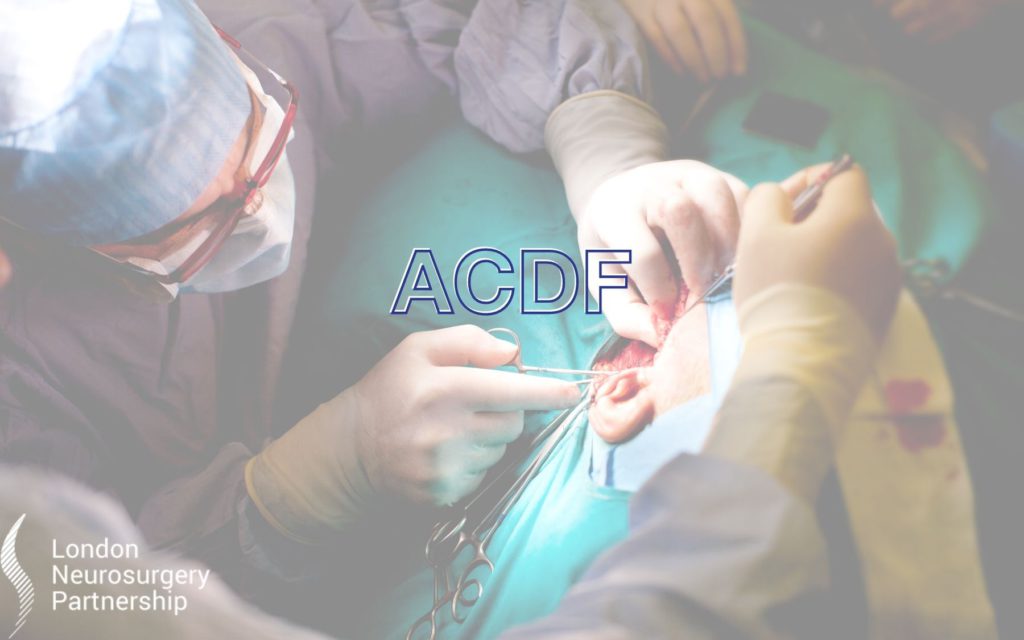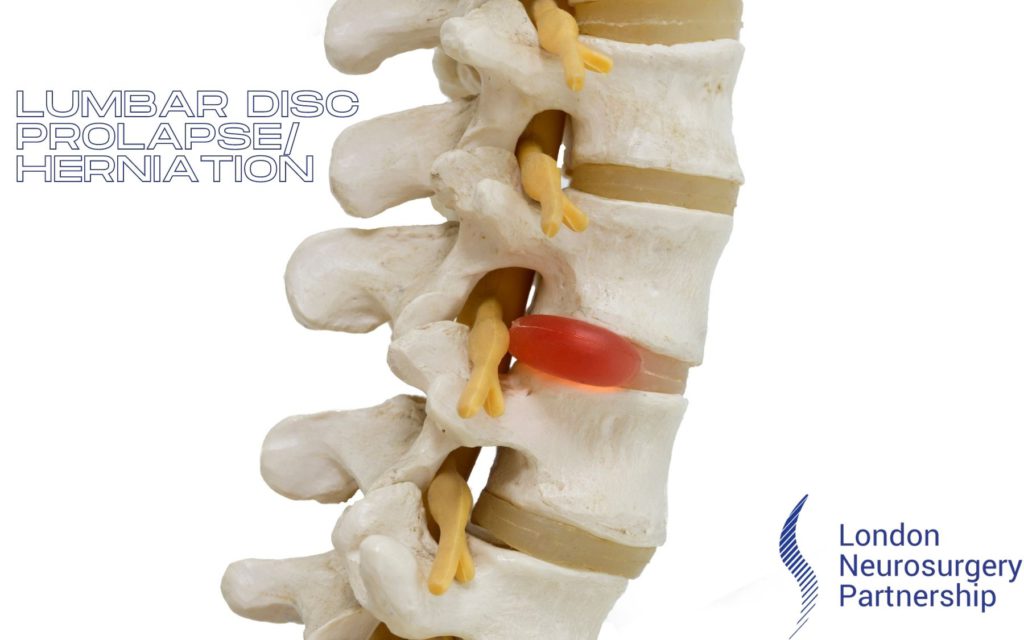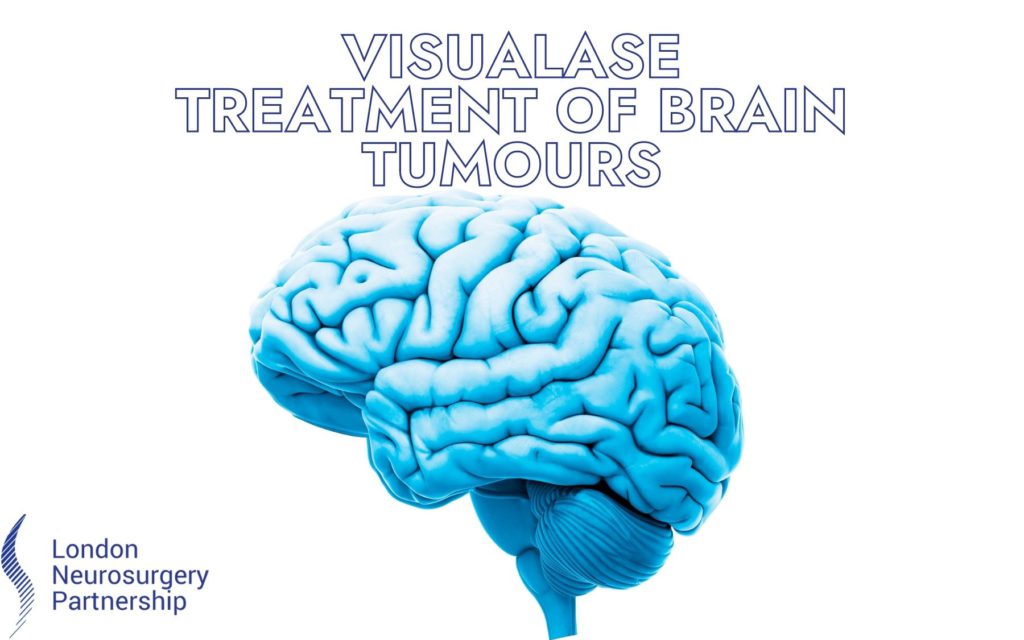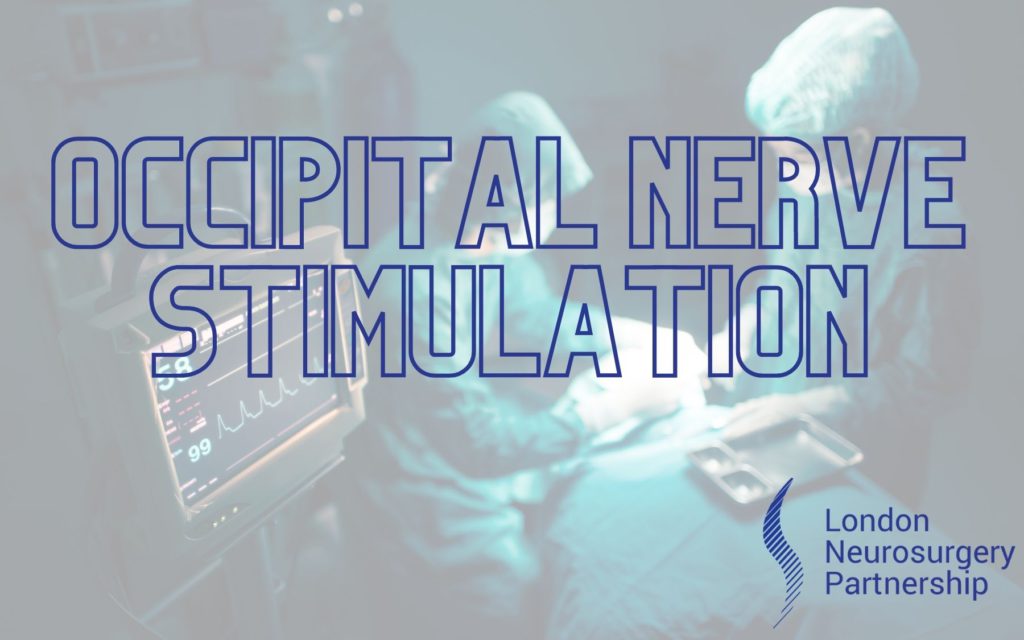
What does ACDF mean? ACDF stands for Anterior Cervical Discectomy and Fusion. To break it down – anterior refers to the front, cervical being the neck region of the spine, discectomy means removing out the disc and fusion, joining two bones together. This is fusion surgery after removing the disc from the front of the neck (ACDF).
Why do people have ACDF surgery?
ACDF surgery is usually in relation to radicular pain which is radiating from the neck, down the arms and in to the fingers. It is when one or more nerves in the neck are affected by a bulging or herniated disc and the disc is compressing the nerves to cause pain, weakness, tingling or numbness down the arms in to the fingers.
During surgery what actually happens?
An incision will be made in the front of the neck and the muscles, trachea (wind pipe), oesophagus (food pipe) and any other tissues in front of the spine will be moved to one side so the surgeon can see the spine bones and the discs. The offending level is then identified using X-ray guidance and the disc at that level is removed – this is the discectomy part of the operation. In place of the disc, a spacer or cage is put in which is filled with bone graft to encourage bone to grow from the level above to the level below, forming one motion segment – that is the fusion part of the operation.
In terms of recovery, patients tend to go home within a couple of days of the operation and recovery time is usually in the region of four weeks. There may be some stiffness immediately following the operation but this should ease up through keeping mobile and doing some exercises prescribed by the physio.
Postoperatively, patients will wake up in the recovery area and will be taken to the ward to be looked after for a couple of days before they return home. Sometimes hoarseness and sore throat or difficulty swallowing may occur in some patients but these symptoms should not continue for long.
Within a few days the patient should be able to return to daily activities without any strenuous activity and walking is encouraged with short distances building up. Using proper lifting techniques, good posture and an appropriate exercise programme whilst maintaining a healthy weight will all help with a speedy and successful recovery.
As with all surgery, this does carry risks and these should be discussed at length with your consultant prior to any decision.
Take a look at our consultants who specialise in spinal surgery.
This article is intended to inform and give insight but not treat, diagnose or replace the advice of a doctor. Always seek medical advice with any questions regarding a medical condition.





0 Comments